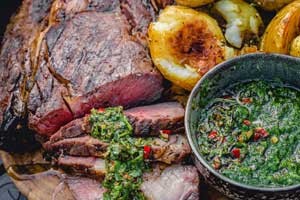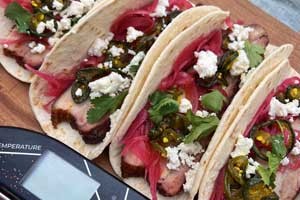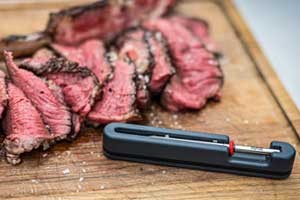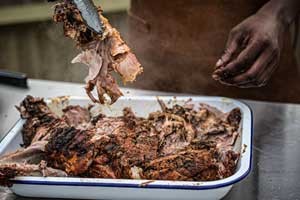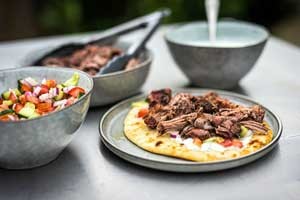Have you ever removed your meat from the heat at the perfect temperature, only to find it looks overdone once you...
Cooking to Temperature Over Time with Jim Moore
Are you team temperature or team time? This year we want you to join the winning team. With temperature as your guide, and a Thermapen as your trusty sidekick, you’ll be cooking perfectly juicy and delicious BBQ food all year long.
But don’t just take it from us. Jim Moore, AKA Only Slaggin, is prolific in the BBQ community for his succulent and adventurous cooks, all cooked perfectly to temperature. So we asked him to talk to us about why being on #TEAMTEMPERATURE is so important when it comes to cooking with meat and fire.
I have been active within the BBQ scene across the UK and Ireland for many years. I’ve worked with major BBQ brands and I run my own BBQ School. I’ve given people hundreds of cooking tips and received many more in return.
But there is one tip that runs above all others, whether you’re cooking on a £5 disposable grill from the local supermarket, a £2500 ceramic grill, or anything in between. Whether you’re grilling, roasting or cooking low and slow… the most important tip is that you should always cook meat to internal temperature and not to time.
Cooking in this way will make the single biggest difference to how your food will turn out. As well as ensuring some meats like poultry etc are safe to eat.
Spending a fortune on fantastic grills and speciality meats is great, but if you also invest in a meat thermometer to confirm the internal temperature of the food, then you will produce perfectly cooked, succulent food to impress your family and friends every time.
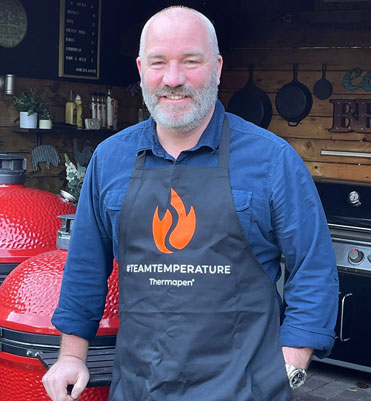
It’s the only way to consistently take the guesswork out of Friday night steaks, Sunday roasts and midweek chicken dinners.
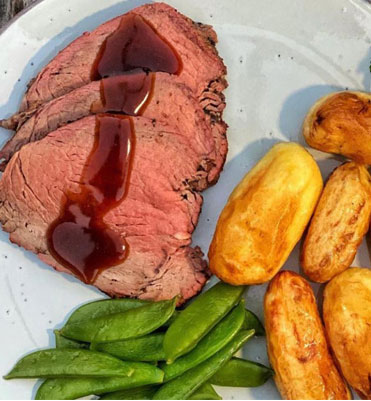
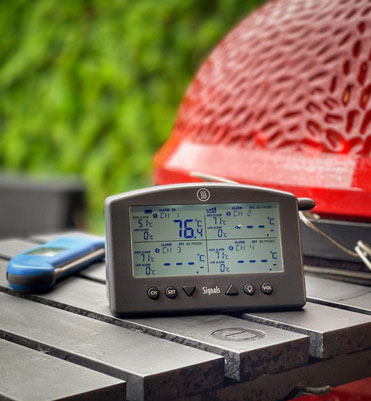
What are the benefits of cooking to temperature?
Saftey. We want the food to be properly cooked and safe to eat.
Enjoyment. We want the food to be succulent and delicious because we’ve put time, money and effort into making it.
Confidence. The more we cook to temperature and create perfect food, the more confident we will be that we can repeat that every time.
Quality. The price of meat is getting higher, so it’s important that each piece of meat is cooked correctly to temperature.
Why should you cook to temperature, not time?
It’s impossible for every bit of meat to be categorised into the same cooking time frame. If you have an instant read meat thermometer, ignore the cooking instructions on the packaging of the meat you’ve purchased.
Supermarket instructions are generic. It’s a best guess, but it’s only a guess. It’s their way of making sure the food will be safe by overestimating the time you really need to cook to, so that the food will be ‘safe to eat’.
But the point at which food is safe to eat is once it’s reached a certain temperature. A simple Google of the meat you are cooking will tell you what temperature you need to cook it to.
Supermarkets don’t know how your oven performs, don’t realise you are maybe going to cook it on the BBQ or indeed you may decide to sous vide and finish in a pan. They are trying to be helpful but in doing so your food can turn out not necessarily as you would have wanted because you’ve overshot the internal temperature by concentrating on the time.
Actual cooking times are influenced by the type and weight of the food, its shape, whether it is bone-in or bone-out, the degree of intended doneness, the initial internal temperature of the food and the temperature of the oven or BBQ you are using. It also depends on whether you are cooking other food and meats in your oven or BBQ, and even the opening of the oven or BBQ lid will all have an effect on the overall cooking time.
Top tips for cooking to temperature?
Plan your temperatures. Plan your cook – know the internal temperature you want to achieve.
Factor in carryover cooking. Be aware of carryover cooking. The internal temperature will continue to rise even when you have removed the meat to rest. It can rise between 5-10°C depending on its size, so if you like a medium or medium rare steak remove it at 52-54°C. It will rise in temperature whilst resting and the end result will be perfect.
Take accurate readings. Be careful not to hit any bones when taking the temperature this will give a false reading. Insert the probe into the thickest part of the meat for the best indication.
Avoid cross-contamination. Always make sure you wash the meat thermometer thoroughly after using it to check the temperature.
Don't forget to rest. Let the food rest. As a general rule of thumb, I rest the meat for a quarter to a third of the cooking time before carving. So if the meat is on the heat for an hour, I’ll rest it for 15-20 minutes.
Place the meat on a wire rack above a tray whilst resting and loosely cover in foil. This will keep the food warm and allow the meat to relax with an even flow of temperature around it.
If you are cooking a larger piece of meat, like a roast, use towels on top of the foil or place put the meat into a dry cooler. This will extend the amount of time for the rest, keeping the food warm and giving you more time to bring everything else together.
There are two main types of food thermometers:
Instant-read thermometers
These are perfect for temperature checking anything from steaks and chicken wings to briskets and roast chicken. The Thermapen One is the best out there for this.
Even when using a leave-in thermometer to monitor the progress I will always use my Thermapen to confirm the temperature and spot check all over.
Leave-in thermometers
Oven and BBQ thermometers like the DOT, Smoke and Signals can be left in place for the duration of the cook. Either the device or a smartphone app will keep you updated on the progress and let you know when it’s done. This is great for longer cooks like roasts and slow-cooked meats.
The best thermometer to use when cooking to temperature
"My Thermapen is never far from my hand during any cook. Cooking to temperature is the single biggest game-changer when it comes to mastering any form of cooking, especially BBQ - it's a confidence builder, nothing is off limits and any dish becomes possible."






